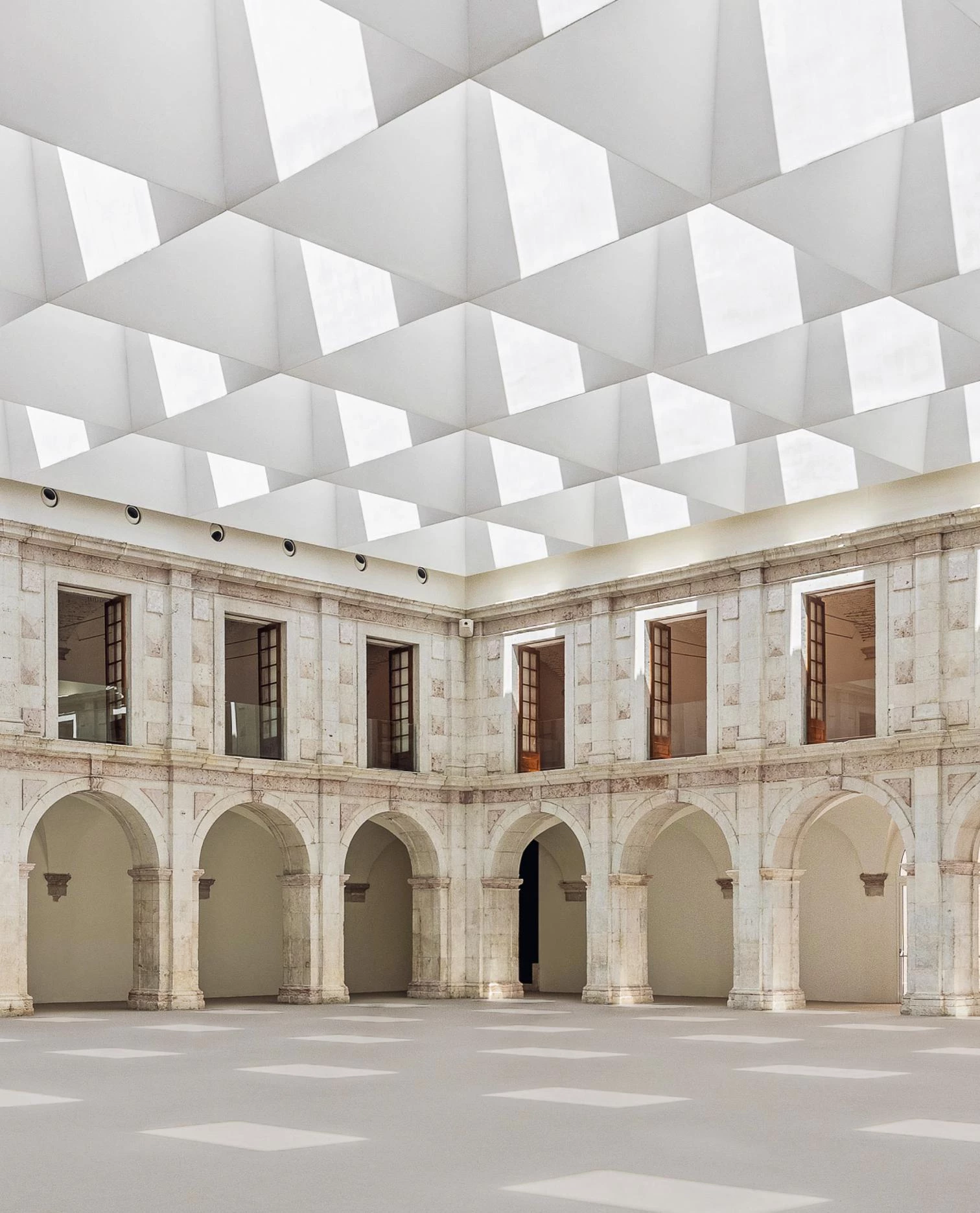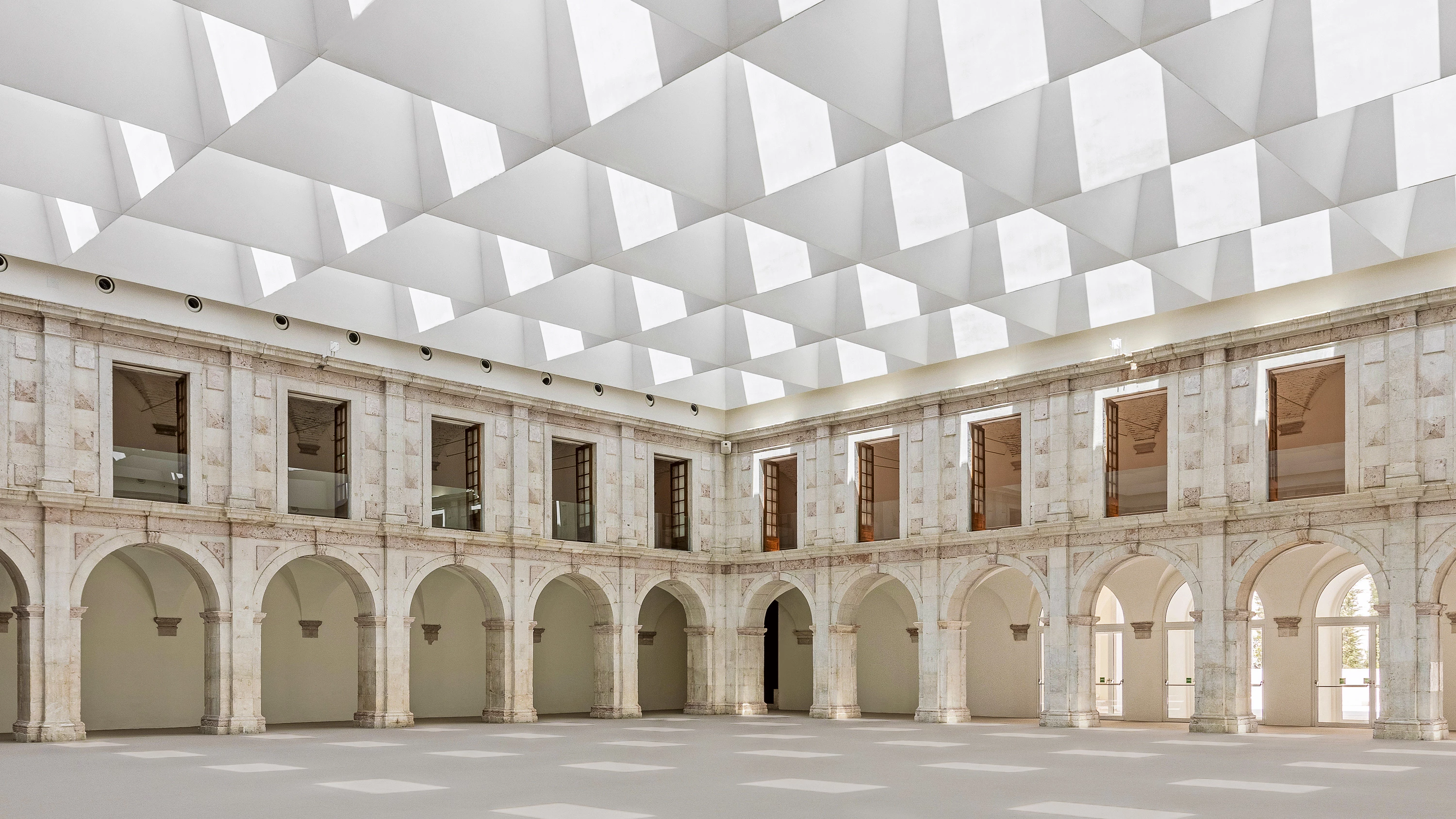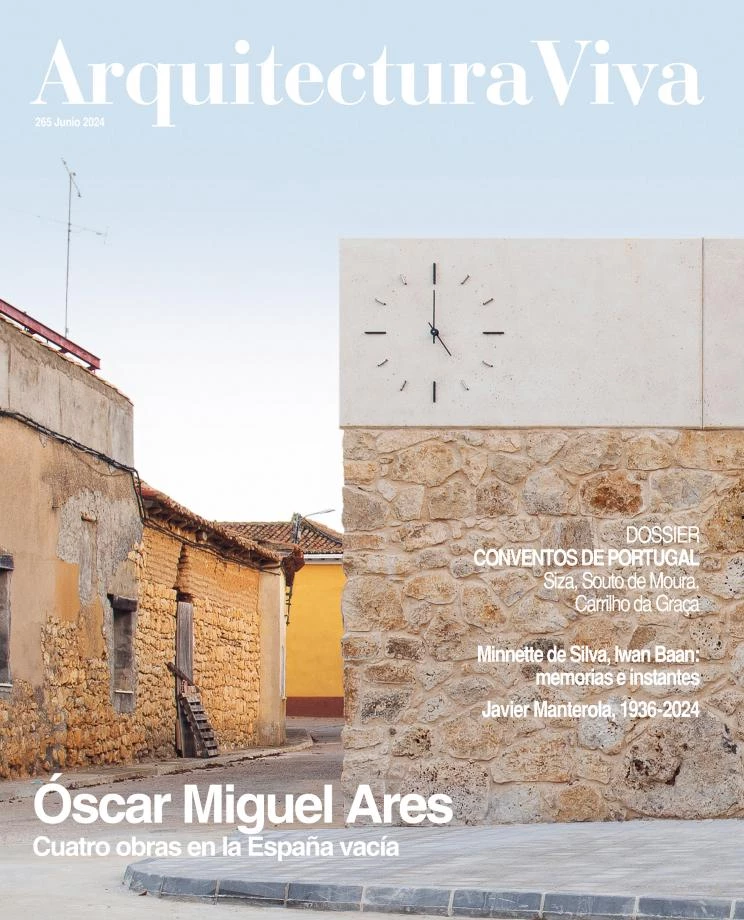Monastery Memorial
Three Converted Convents in Portugal

Risco, Centro de convenciones Convento do Beato, Lisboa (Portugal)
To think of monasteries and Portugal is to think of the novel Memorial do Convento (published in English as Baltasar and Blimunda), where in Baroque prose José Saramago intertwined the pursuits of a group of heterodox characters with the construction of the huge rococo palace-monastery of Mafra. The association of ideas rests on a cliché, which, as clichés are wont to do, lays bare a truism: the Portuguese landscape’s tight bond with convents and monasteries, and the powerful stamp of heritage that these complexes have left on our next-door neighbor – as they have on Spain itself.
Monasteries were not just buildings; they were erected as elements of territorial colonization that exercised control over vast estates and revenues, from wine to tiles, from chestnuts to iron utensils or sophisticated crafts. Centers of spiritual but also economic power, the monasteries flaunted their splendor through sumptuous and functionally efficient buildings that spread far and wide, to the point that one could say that in Portugal, the history of monastery architecture is the history of architecture itself.
As in Spain, the crises and confiscations of monasteries in the course of the 19th century ruptured the spiritual and economic authority of these institutions, in simultaneity with the comeback of magnificent buildings that were vulnerable to the ill will of time, but above all to mercantile greed, which had no qualms about pillaging that heritage. Nevertheless, Portugal’s centenary monastic stamp was unlikely to disappear from the landscape, and by the mid-20th century no one questioned the importance of the heritage and the need to preserve and refurbish the monasteries.
Like elsewhere in Europe, in Portugal there were many ways to go about revamping buildings, but this dossier focuses on those that give architects more freedom – and also more prospects of failure – because they are carried out from an angle that prefers a coexistence of old and modern to mere restoration. Three exquisite interventions by three Portuguese architects are presented here. In the first, the renovation of the Mosteiro de Leça do Balio in Matosinhos, Álvaro Siza makes the petrous volume of the original monastery engage in dialogue with the immaculate white walls of an annexed pavilion meant for cultural uses. In the second, the restoration of the Claustro do Rachadouro in Alcobaza, Eduardo Souto de Moura opts for an elegant moderation that makes it possible to insert a hotel without spoiling the atmosphere of the historic cloister. Finally, in the conversion of the Convento de Jesús into a museum, João Luís Carrilho da Graça uses a carefully worked- out palette of finishes and motifs that breathe new life into the original convent’s geometries and patinas.

Aires Mateus, Colegio de la Trinidad, Coímbra (Portugal)






